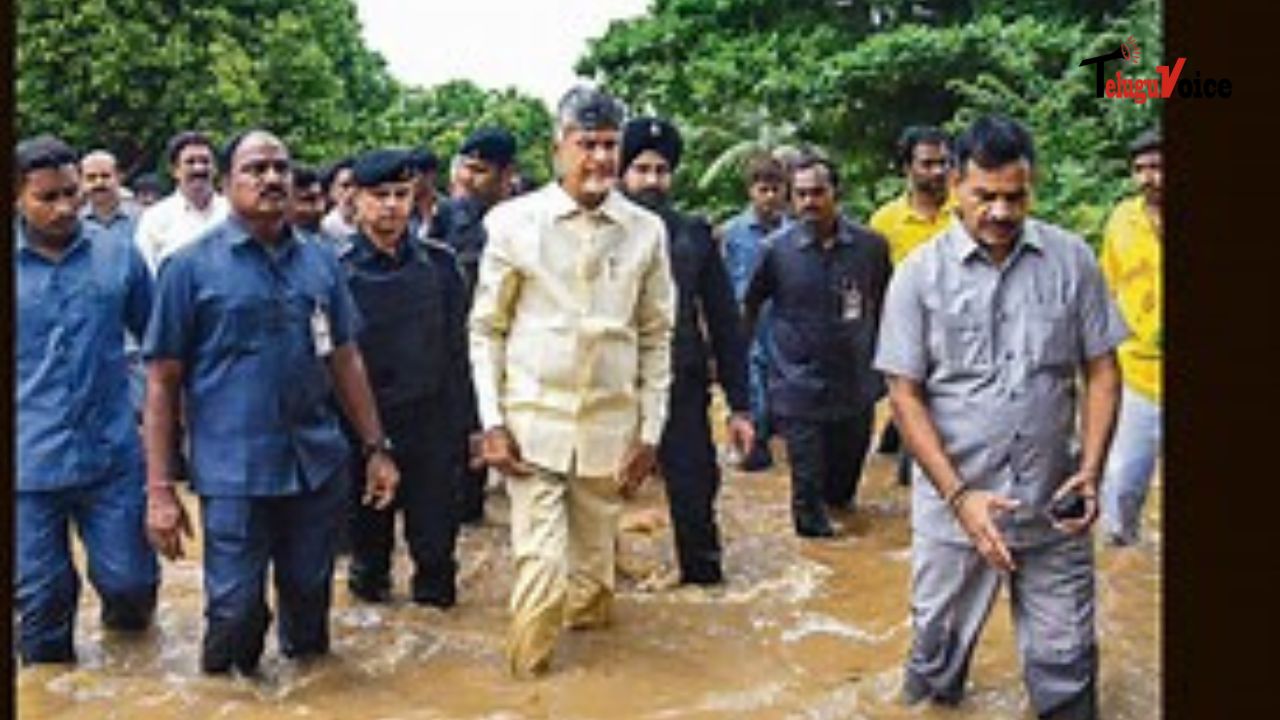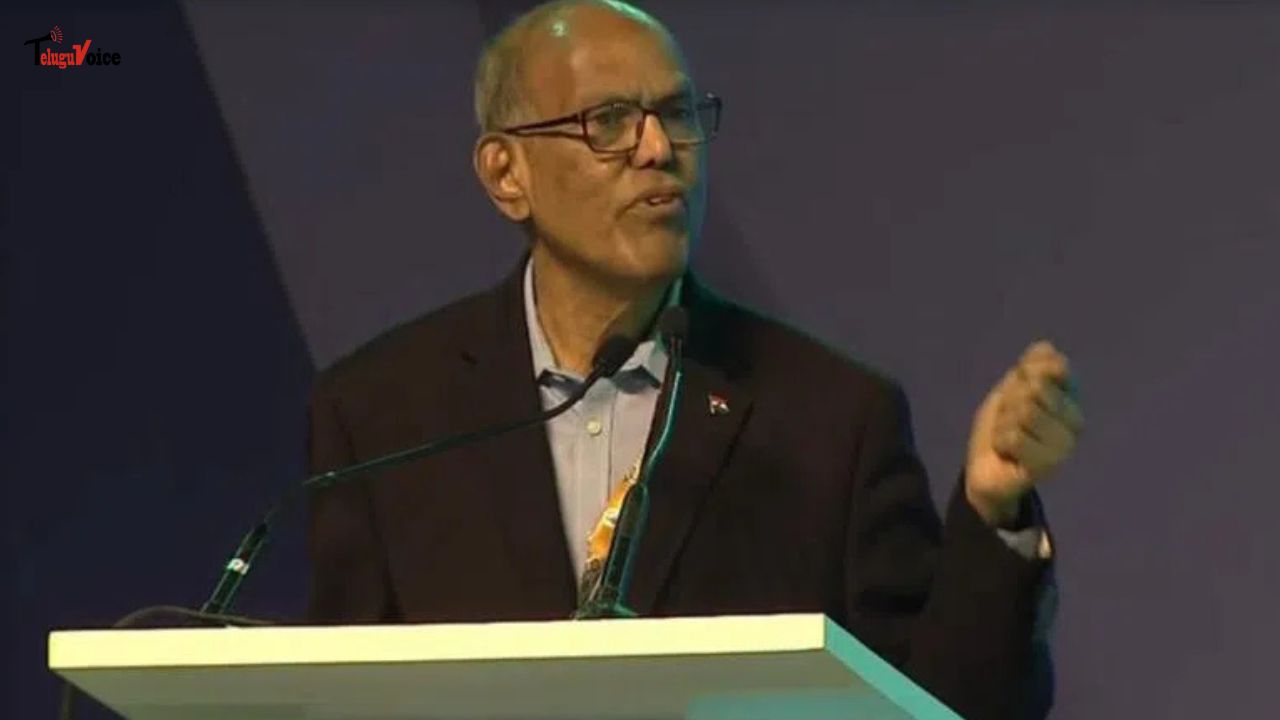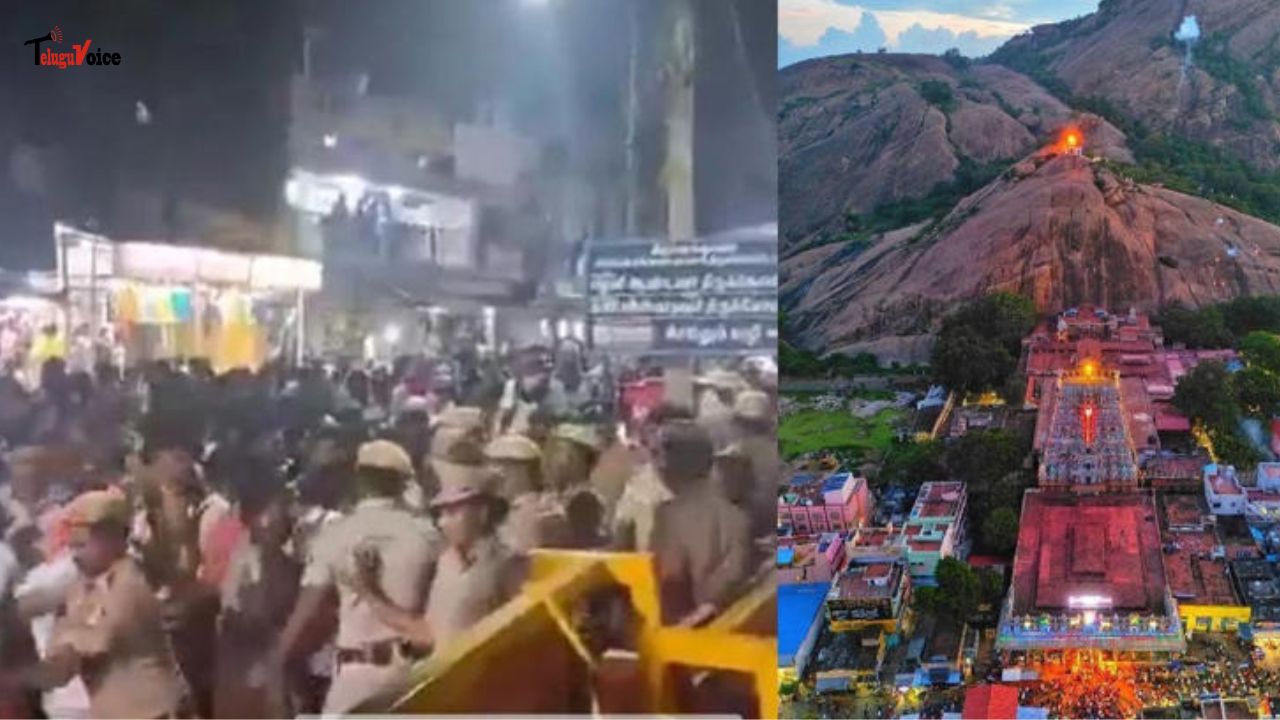Naidu’s Crisis Management Experience Proves Vital During Vijayawada Floods

Andhra Pradesh Chief Minister N. Chandrababu Naidu’s past experience in handling cyclones and floods played a key role in addressing the recent floods that struck Vijayawada and its surroundings, according to sources familiar with the situation.
From day one, Naidu took charge of managing the crisis, leading efforts to mitigate the damage caused by the floods. The Krishna River at Prakasam Barrage in Vijayawada recorded an unprecedented inflow of 11.49 lakh cusecs, the highest in 170 years. Simultaneously, the Budameru River on the northern side caused the most severe devastation seen in the city since 1964.
For ten consecutive days starting September 1, Naidu stayed in the flood-affected areas of Vijayawada. He opted not to return to his residence in Undavalli, Amaravati, and instead, transformed the NTR District Collector’s office into his makeshift camp. Naidu canceled all prior engagements and dedicated his time to monitoring relief efforts throughout the state.
During a period of intense rainfall, on the night between August 31 and September 1, the city recorded 290mm of rain in just 12 hours. Naidu immediately left his home and moved into a caravan, using the NTR district collectorate as his command center. He personally ventured into hard-hit areas such as Singh Nagar, Jakkampudi Colony, and Chitti Nagar, often using boats, earthmovers, and tractors to reach people.
Naidu was often seen wading through knee-deep water to directly oversee rescue operations, addressing the public's grievances, and holding late-night press briefings to provide updates. Despite the challenging circumstances, he remained committed to his responsibilities, even choosing to forgo celebrating the Ganesh Chaturthi festival and his wedding anniversary, according to state revenue minister Anagani Satya Prasad.
Political analyst Ramesh Kandula noted that Naidu’s extensive experience managing previous disasters, including the 1996 super cyclone in Konaseema and cyclones such as Hudhud (2014) and Titli (2018), had equipped him to tackle the current crisis effectively. This time, Naidu incorporated modern technology, utilizing drones to deliver food and medicine to areas that were difficult to reach.
In a bid to streamline operations, Naidu appointed 32 senior IAS officers to oversee food distribution and evacuation efforts across the flood-affected areas, which were divided into 32 sectors. He also designated 179 officials to manage relief efforts.
Additionally, Naidu implemented innovative measures such as deploying fire engines from across the state to assist with post-flood cleaning and sanitation operations. These vehicles played a crucial role in removing debris and slush, and in conducting fogging operations to prevent the spread of diseases.
Despite his efforts, Naidu faced criticism from the opposition. The YSR Congress Party accused him of using the floods as a publicity opportunity rather than focusing on resolving the issues on the ground. “Naidu seemed more interested in his media image than effectively managing the crisis,” remarked YSRCP leader and former agriculture minister K Kanna Babu.
Nonetheless, Naidu’s hands-on approach and technological interventions have been credited with aiding relief operations during one of Vijayawada’s most challenging flood events.

 South Africa tour of India 2019
South Africa tour of India 2019










Comments